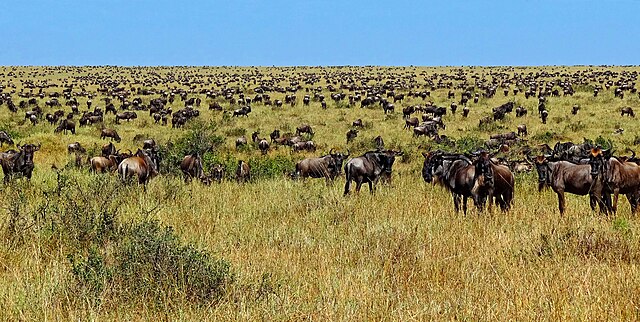Environmental migrants are people who are forced to leave their home region due to sudden or long-term changes to their local or regional environment. These changes compromise their well-being or livelihood, and include increased drought, desertification, sea level rise, and disruption of seasonal weather patterns. Though there is no uniform, clear-cut definition of environmental migration, the idea is gaining attention as policy-makers and environmental and social scientists attempt to conceptualize the potential social effects of climate change and other environmental degradation, such a deforestation or overexploitation.
Shelters in Kenya for those displaced by the 2011 Horn of Africa drought
Desertification is a type of gradual land degradation of fertile land into arid desert due to a combination of natural processes and human activities. This spread of arid areas is caused by a variety of factors, such as overexploitation of soil as a result of human activity and the effects of climate change. Geographic areas most affected are located in Africa, Asia and parts of South America. Drylands occupy approximately 40–41% of Earth's land area and are home to more than 2 billion people. Effects of desertification include sand and dust storms, food insecurity, and poverty.
Goats inside of a pen in Norte Chico, Chile. Overgrazing of drylands by poorly managed traditional herding is one of the primary causes of desertification.
Wildebeest in Masai Mara during the Great Migration. Overgrazing is not necessarily caused by nomadic grazers in large travelling herd populations.
A shepherd guiding his sheep through the high desert outside Marrakech, Morocco
View of Sydney Harbour Bridge covered in dust





